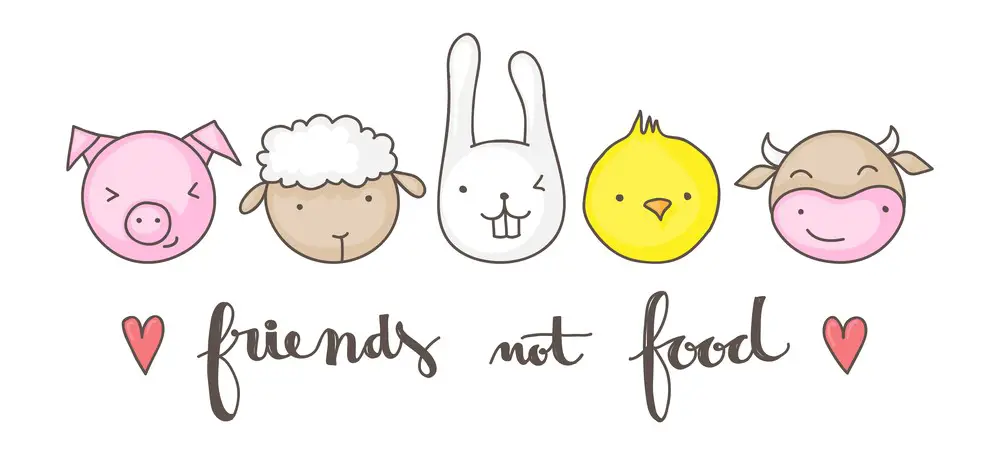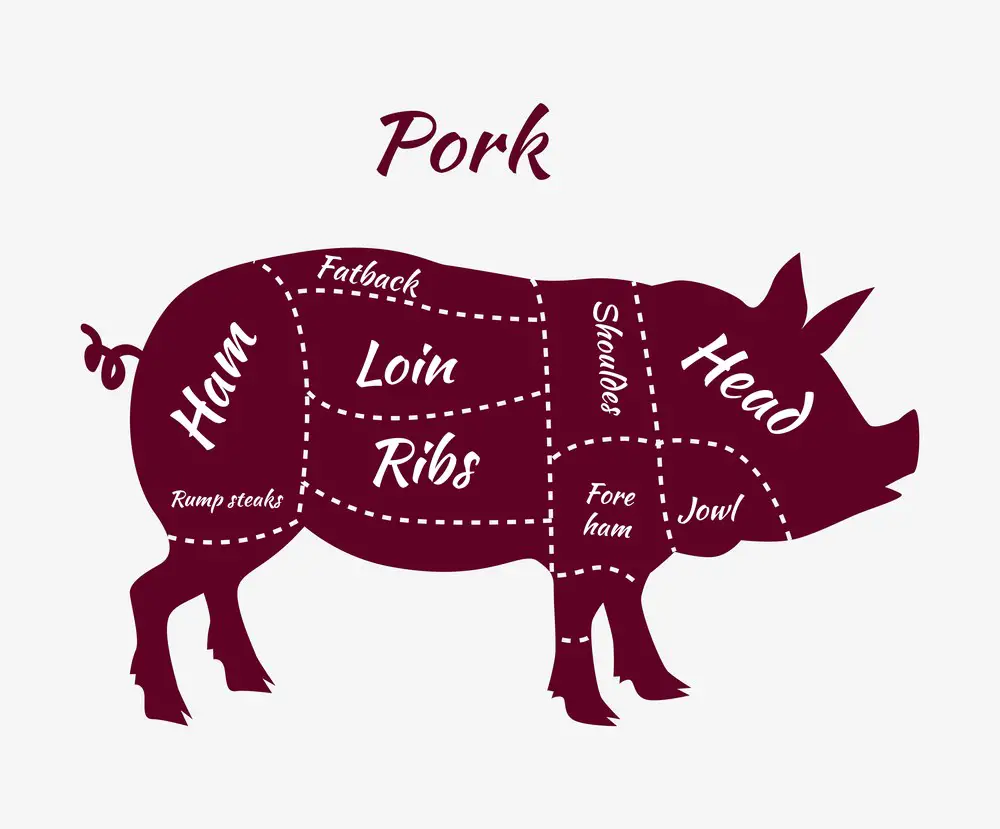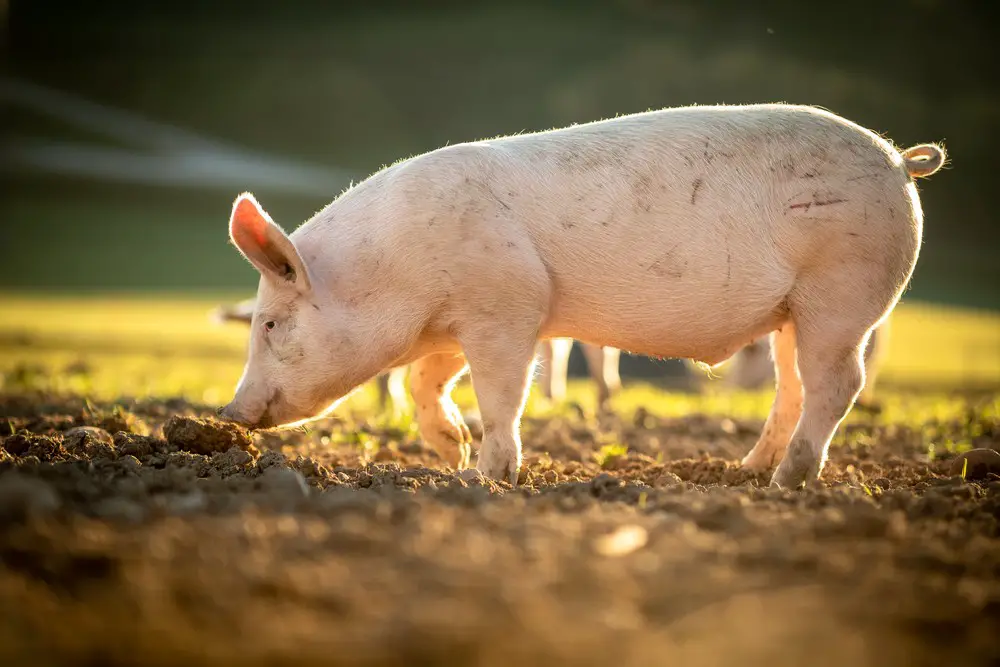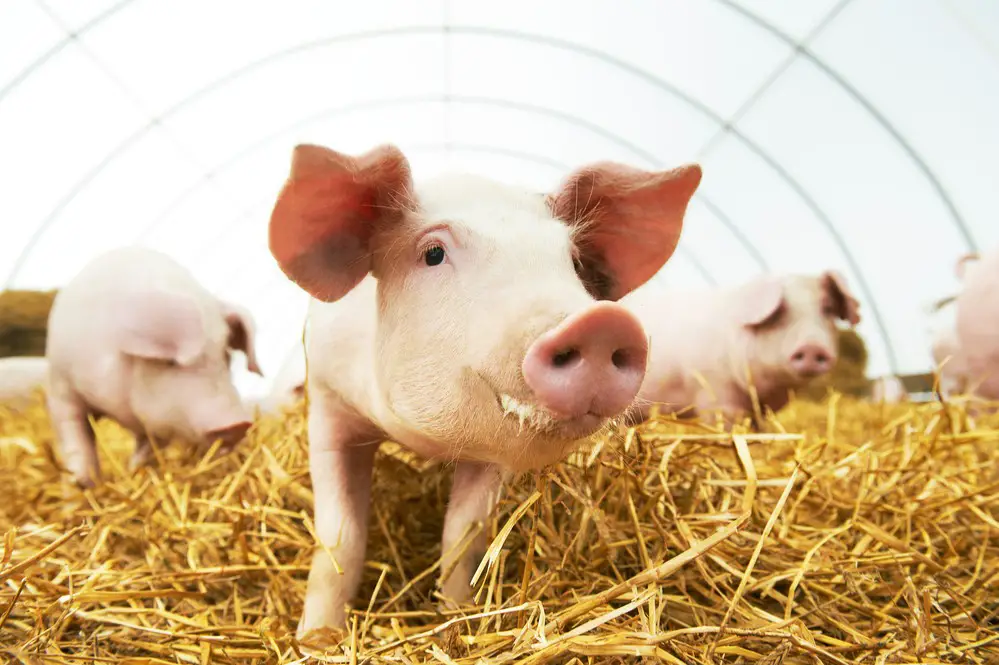When exploring dietary choices, especially if you want to maintain a vegetarian or vegan lifestyle, it’s essential to be aware of the foods that could contain pork. While some products feature pork as a main ingredient, others might surprise you with their less evident pork-derived components. Being informed helps you make choices aligned with your dietary goals and ethical preferences.
The presence of pork isn’t always clear from a product’s name or appearance. It can be concealed in additives, flavorings, or the broth used in canned soups and beans. For those following a strict vegetarian or vegan diet or for people who avoid pork for religious or health reasons, understanding how pork can sneak into seemingly innocuous foods is crucial. Learning to read labels effectively and being aware of common foods often mistaken for pork-free can help you maintain your dietary boundaries.
Cooking at home can offer more control over your ingredients, allowing you to prepare satisfying dishes that respect your vegan or vegetarian lifestyle. However, it can be challenging to identify hidden pork products while dining out or shopping for groceries. This article aims to guide you through various pork-containing foods, ensuring you can make informed choices without compromising your dietary restrictions.
Key Takeaways
- Pork can be found in obvious products and hidden as additives in many foods.
- Reading labels carefully is essential for those avoiding pork due to dietary restrictions.
- Cooking at home gives you control to create delicious meals that comply with vegetarian or vegan lifestyles.
 Understanding Pork in the Diet
Understanding Pork in the Diet
In considering your dietary choices, you must be informed about the foods you include or avoid. For those seeking to eschew pork, understanding its nutritional content and cultural significance is critical.
Nutritional Aspects
Pork is a red meat derived from pigs and is widely consumed globally. Nutritionally, pork is rich in protein, supplying essential amino acids necessary for muscle growth and repair. Additionally, it contains various vitamins and minerals, such as B vitamins (particularly B6 and B12), iron, zinc, and phosphorus. However, the fat content in pork can vary greatly depending on the cut, with specific cuts like bacon being significantly higher in fat and incredibly saturated fat.
- Lean cuts of pork include tenderloin and loin chops.
- Fatty cuts include bacon and pork belly.
For those selecting alternative protein sources, consider legumes, nuts, and tofu, which offer protein, fiber, and other nutrients.
Key takeaway: Focusing on lean protein alternatives can help maintain a balanced diet if you’re avoiding pork.
Cultural Significance
Pork holds significant cultural importance in many cuisines and is a staple in various traditional recipes. Whether it’s presented as a central dish in family gatherings or used in festive celebrations, its presence is notable across many cultures.
- In Italian cuisine, pork is often found in dishes like spaghetti carbonara.
- Chinese cooking features pork in meals like char siu and dumplings.
Understanding these cultural entwines can help you quickly navigate menus and recipe books, enabling you to find or create pork-free versions of these beloved dishes.
Key takeaway: Being aware of pork’s role in cultural dishes empowers you to make informed choices while exploring international cuisines.
Types of Pork Products
When exploring the wide range of pork products available, it’s essential to know the specific types that may be present in various foods. Whether you’re aiming to avoid these for personal or dietary reasons, this guide will help you identify common pork products you might encounter.
Pork Cuts
As a versatile meat, pork comes in numerous cuts that vary in taste and culinary uses. Pork chops are one of the most popular cuts; they’re typically from the loin and can be found bone-in or boneless. Pork tenderloin, also from the loin area, is known for its tenderness and is often cooked quickly over high heat.
- Ground pork is another form derived from various parts of the pig, commonly used in recipes like meatballs or mixed with other ingredients.
- Roast pork, often enjoyed during special occasions, is a larger cut that is slow-cooked to achieve a tender and flavorful dish.
These cuts are used extensively in cuisines worldwide, so it’s wise to familiarize yourself with their names and appearances. Your vigilance can help you steer clear of these pork products if that’s your preference.
Key takeaway: Be mindful of the different names for each pork cut to identify and avoid them if needed effectively.
Processed Pork Foods
Processed pork foods are often less recognizable as pork because they undergo transformations that alter their original form. Bacon is a notable example, commonly used to add a savory flavor to dishes; it’s cured and sometimes smoked, giving it a distinctive taste.
- Ham is another cured pork product that can occur in various forms, from whole hams to thinly sliced deli meats.
- Pulled pork, typically shoulder cut that’s slow-cooked and shredded, is popular in barbecue dishes and often found in sandwiches and tacos.
Dishes like the Mexican staple carnitas involve simmering the meat in fat until tender, creating a flavor-rich component for numerous traditional meals.
Key takeaway: Recognizing processed pork products requires understanding the preparation methods that conceal their origin, but keeping an eye out for familiar names on ingredient lists is a practical strategy.
Cooking with Pork
When preparing dishes with pork, it’s essential to be aware of the various techniques and methods to ensure that you avoid consumption if you follow a vegan diet. Being informed is your best strategy to identify pork ingredients in various dishes.
Preparation Techniques
Before pork can be turned into a dish, it typically goes through several preparation stages. Here are key strategies to look out for:
- Marinating: Many pork dishes, like char siu, involve marinating the meat beforehand to infuse it with flavors. This process often includes a mix of soy sauce, honey, rice wine, and spices.
- Brining: Some recipes, such as cider-glazed pork tenderloin, might start with brining, which involves soaking the pork in water, salt, and occasionally sweeteners or other seasonings to tenderize it.
Your key takeaway is that if a dish has a rich, deeply infused taste or is exceptionally tender, it may have been through these pork preparation processes.
Cooking Methods
The cooking methods used for pork vary widely and can affect the flavor and texture:
- Roasting/Baking: Dishes like lemon-dijon pork sheet pan supper are often cooked in the oven. This process can give the edges a crispy texture while keeping the inside moist.
- Grilling: Cooking pork on a grill produces a charred flavor and, often, visible grill marks. This method is standard in preparing char siu.
- Pan Frying: Methods like pan-frying are utilized to achieve a golden-brown crust and preserve a moist interior. An example of this is creating a dish like creamy paprika pork.
A digital or meat thermometer is essential for cooks to check the internal temperature of pork, which should reach a minimum of 145°F (63°C) to ensure that it is adequately cooked.
Remember, if you’re vegan and trying to avoid pork, keep an eye out for these textures and flavors, as well as the use of thermometers in cooking, as indicators that pork might be included in the preparation.

Pork in Global Cuisine
Pork is a common ingredient found across various global cuisines. It’s used in many dishes, from sweet and sticky char siu in Asia to savory apple cider pork chops in America.
Asian Dishes
In Asia, pork is frequently a key component in many beloved dishes. Here’s how it appears on the menu:
- Char Siu: This is a type of barbecued pork known for its glossy coating and rich flavor, often found hanging in windows of Cantonese restaurants.
- Food Truck Specials: Some Asian food trucks offer creative pork dishes that fuse traditional spices with modern twists.
Key takeaway: If you’re exploring Asian cuisine, watch out for char siu, a popular pork item that could appear in various forms.
European Dishes
Europe’s diverse cuisines also integrate pork into their traditional and modern fares. Some notable mentions include:
- Italian Salumi: Cured meats like prosciutto and salami are often used as appetizers or part of main courses.
- Spanish Tapas: Dishes such as chorizo, a pork sausage, are typical in tapas bars across Spain.
Key takeaway: When dining on European dishes, cured pork meats like salumi could be present in many starters and main courses.
American Dishes
American dishes often feature pork as a centerpiece or enhancement to the flavor profile. Notable examples include:
- Apple Cider Pork Chops: A dish that combines sweet apple cider glaze with hearty pork chops, a delicious blend of sweet and savory.
- Barbecue: Ribs and pulled pork are staples at American cookouts and barbecue restaurants.
Key takeaway: If navigating American menus, be cautious of dishes like apple cider pork chops and barbecue pork items.
Pork Alternatives for Dietary Restrictions
If you’re avoiding pork due to dietary restrictions, finding tasty and satisfying alternatives is key. These meat-free options can satisfy your cravings while aligning with vegetarian and vegan lifestyles.
Vegetarian Substitutes
Tofu: This versatile soy product is a staple in vegetarian cuisine for its ability to absorb flavors and mimic meat textures. It’s perfect in dishes like stir-fries and stews.
Seitan: Often called “wheat meat,” seitan has a chewy texture that’s similar to pork. It works well in slices for sandwiches or even ground up for taco fillings.
Key Takeaway: Versatile soy and wheat-based substitutes like tofu and seitan offer a similar texture and are excellent for various recipes that typically contain pork.
Vegan Choices
Jackfruit: This tropical fruit shreds apart to resemble pulled pork, making it ideal for vegan BBQ dishes and tacos. It’s an unprocessed plant food that’s low in calories yet filling.
Lentils: A nutritional powerhouse, lentils can be seasoned in countless ways and used in patties, loaves, or as a ground meat substitute in sauces and stews.
Key Takeaway: Unprocessed plant foods like jackfruit and lentils can mimic pork texture and are highly adaptable to your favorite seasonings.

Hidden Pork Derived Ingredients
You might be surprised that pork can sneak into your diet in many hidden ways. Here’s what you need to watch out for:
In Processed Foods
Processed foods often contain ingredients that originate from pork without being obvious. You must read labels carefully.
- Gelatin: Commonly used as a thickener in products like yogurts, candies, and some frozen foods.
- Example: Gelatin can be found in many gummy candies and marshmallows.
- Lard: Sometimes used in baked goods to add a flaky texture.
- Example: Lard can be an ingredient in pie crusts and pastries.
- Enzymes: Found in cheese and other dairy products, these can be derived from pork.
- Example: Some cheeses use enzymes from pork in the cheese-making process.
- Glycerin and Animal Glyceride: Used as sweeteners or to maintain moisture in baked goods.
- Example: Glycerin might be listed in snack and protein bars’ ingredients.
- Emulsifiers and Additives: These include stearates and others that can be pork-based.
- Example: Check the labels on sauces and dressings, as they might contain emulsifiers from pork.
Key takeaway: Always check labels for these ingredients, as they often go unnoticed in seemingly innocuous products.
In Non-Food Products
Pork derivatives can be found in items that aren’t even edible, making them hidden culprits in everyday items.
- Glycerin: Used in creams and lotions for its moisturizing properties.
- Example: Glycerin is a common component in skincare products.
- Fatty Acids and Stearic Acid: Found in soaps, candles, and cosmetics.
- Example: Fatty acids can lurk in your favorite lipstick or soap bar.
- Gelatin: Utilized in the pharmaceutical industry, particularly in the production of capsules and some tablets.
- Example: Some of your vitamins or supplements might be encapsulated in gelatin.
- Animal Fats: Used in producing plastic bags and to help print ink on newspapers.
- Example: The plastic bags from your grocery store may contain animal fats.
Key takeaway: Awareness extends beyond food; personal care items, medications, and even some household products can contain hidden pork derivatives.
Identifying Pork in Labeling
When scanning food labels, you’ll want to be extra vigilant for pork-derived ingredients, which can appear under various names and in different forms, some less obvious than others.
Common Names on Labels
As an ingredient, pork can pop up under numerous aliases you might not immediately recognize. Keep an eye out for:
- Pork Loin: Found in pre-packaged meals or sometimes in deli meats.
- Bacon/Bacon Bits: Often sprinkled on salads, baked potatoes, or soups.
- Ham: Used in sandwiches, salads, and as a pizza topping.
- Sausage: Found in breakfast items, pizza, and pasta dishes.
- Gelatin: A sneaky one, derived from animal skin and bones and found in many gummy products like gummy bears and marshmallows.
A key takeaway is to memorize the common pork-related terms you might find on labels, as they’re not always straightforward.
Understanding Ingredients
Next up, you’ll want to understand the less obvious ingredients that may be animal-derived:
- Cysteine: An amino acid that can be sourced from animal hair and feathers and is sometimes used in bread production.
- Animal Fats: These can be included in baked goods and may not be marked as pork fat.
- Stearic Acid: Often found in chewy candies and gum, this ingredient may have pork origins.
Don’t forget that many processed foods and sweets like marshmallows can contain gelatin, which is often pork-based unless otherwise specified.
The key takeaway? Make learning about ingredient names a habit because knowledge is your best friend in making informed choices that align with your vegan lifestyle.
Pork-Free Recipes
Whether exploring vegan cuisine or avoiding pork, creating satisfying meals is a delightful journey. Embrace a world of flavors with an array of pork-free recipes that will excite your palate.
Main Dishes
Root vegetables form the heart of many delightful main dishes. Their earthy flavors and satisfying textures can replace meat-centric dishes with ease:
- Vegan Shepherd’s Pie: Layer a rich stew of lentils, carrots, and parsnips beneath fluffy mashed potatoes. Bake until golden.
- Stuffed Bell Peppers: Quinoa, black beans, and a hint of mint make a refreshing filling for vibrant bell peppers.
Key Takeaway
Main dishes without pork can be just as hearty when root vegetables take center stage.
Snack Options
Snacks are an adventure in taste and texture, even without pork. Here’s how to keep it lively and delicious:
- Lemongrass Tofu Lettuce Wraps: Marinate tofu in a lemongrass mixture, then tuck it into crisp lettuce with a drizzle of mango salsa.
- Roasted Chickpeas: Season with your favorite spices for a crunchy, protein-packed bite.
Key Takeaway
Keep your snacks creative and fresh with plant-based proteins and aromatic herbs.
Foods Commonly Mistaken for Pork-Free
Sometimes, the ingredients in your favorite snacks and treats can be deceiving. You’d be surprised to find that many products thought to be pork-free contain derivatives like gelatin, which is often pork-based.
Sweets & Snacks
- Fruit Gums & Marshmallows: Watch out for gelatin, commonly sourced from pork, used as a gelling agent in candies like fruit gums. Opt for ones labeled gelatin-free.
- Snack Foods: While savory snacks like potato chips seem innocent, flavors such as barbecue might include bacon or pork derivatives for taste. Check your labels carefully to avoid unexpected pork ingredients.
Key takeaway: Always read the labels on sweets and snacks, as pork can be hidden in flavorings and gelling agents.
Dairy & Bread Products
- Yogurt & Sour Cream: Some brands add gelatin as a thickener, which could be pork-based, to products like yogurt and sour cream. Look for versions that use plant-based thickeners instead.
- Bread & Cheese: Bread may contain enzymes, and cheese might have rennet, both potentially derived from pork. Cheese varieties like Parmesan can often have animal rennet, so seek vegetarian cheeses using non-animal rennet.
- Cream Cheese: Not all cream cheese is equal – some may include gelatin. Your best bet is to find brands that specifically cater to plant-based diets.
Key takeaway: Be diligent with dairy and bread products; plant-based or vegan labels are your friends here.
The Impact of Pork Consumption
When considering pork on your plate, it’s essential to recognize the ripple effects your choice may have on your health and the environment.
Health Implications
Like any animal protein, consuming pork requires thoughtful consideration of its health impact. Pork is rich in protein, vitamins, and minerals but also in animal fats, which can be a concern when consumed in excess. Moderation is key, as well as paying attention to how the pork is prepared.
- Cholesterol & Heart Health: Pork contains saturated fats, which can lead to higher cholesterol levels and potentially increase the risk of heart disease.
- Processed Pork Products: Often high in salt and preservatives, these can contribute to long-term health problems when eaten regularly.
Key Takeaway: You want to be mindful of the type and amount of pork you consume to maintain good health.
Environmental Considerations
The production of pork, like that of any livestock, has significant environmental implications. Understanding these can guide you to make choices that align with your values and the planet’s well-being.
- Resource Intensive: Raising pigs requires substantial amounts of water and feed, which can strain natural resources.
- Greenhouse Gas Emissions: Livestock farming is a notable contributor to methane emissions, a potent greenhouse gas.
Key Takeaway: By being aware of the environmental impact, you can make more informed decisions about your food.
Frequently Asked Questions
Before you dive in, it’s important to be aware that pork can be present in a wide range of foods, sometimes where you least expect it. This section aims to shed light on some hidden sources, helping you make informed choices.
What types of meats are derived from pigs?
You’ll find that pork manifests in various forms, such as bacon, ham, sausages, and salami. It’s essential to read labels, as these meats might go by different names depending on the cuisine.
Can you identify foods that may have hidden pork derivatives?
Sure can! Be watchful for terms like lard, pig fat, often used in baking and cooking. Similarly, ‘rendezvous ribs’ or ‘carnitas’ could be code for pork dishes. Always check the ingredients if you’re unsure.
Which common food products include pork gelatin?
Pork gelatin sneaks into many products, particularly sweets like marshmallows, some types of gummy candies, and desserts like panna cotta. Reading the packaging is your best strategy for avoiding these.
Key Takeaway: Stay sharp and read labels to keep pork gelatin out of your sweets stash.
Are there any snacks, such as certain brands of chips, that contain pork ingredients?
Yes, there are. Flavored chips or snack mixes may occasionally use pork derivatives for seasoning, such as bacon- or barbecue-flavored varieties. Keep an eye out for the specifics on the ingredient list.
What should I avoid eating if I have an allergy to pork?
You should avoid all the meats mentioned earlier and any products containing gelatin or lard. Be vigilant with broths or gravies that could be pork-based and always inquire at restaurants to ensure your meal is pork-free.
Could you list some unexpected byproducts of pigs found in everyday items?
For sure. You might be surprised to find pig byproducts like gelatin in certain medications or supplements and glycerin, sometimes derived from pork, in cosmetics and personal care items.
Key Takeaway: Double-check your medication and personal care labels to catch those pork byproducts.

